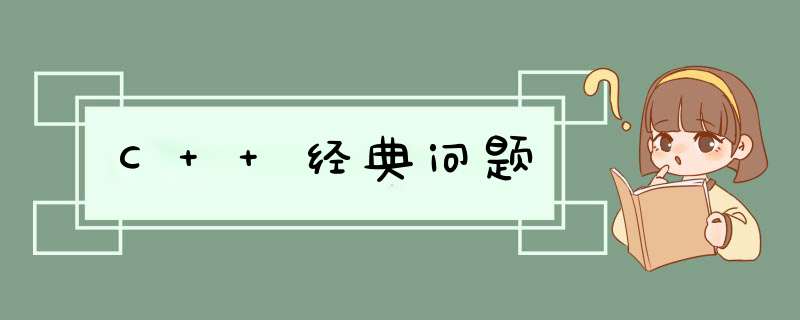
- 一. 函数对象概念
- 二. 一元谓词
- 三. 二元谓词
- 四. 内建函数对象
- ① 概念
- ② 分类
- ③ 用法
- ④ 算术仿函数
- ⑤ 关系仿函数
- ⑥ 逻辑运算仿函数
概念:
- 重载函数调用 *** 作符的类,其对象常称为函数对象.
- 函数对象使用重载的()时,行为类似函数的调用,所以也叫仿函数
本质:
函数对象(仿函数)是一个类,不是一个函数
特点:
- 函数对象在使用时,可以像普通函数那样调用,可以有参数,可以有返回值
- 函数对象超出了普通的函数的概念,函数对象可以有自己的状态(类属性)
- 函数对象可以作为参数传递
/*----------------------------------------------------------------
* 项目: Classical Question
* 作者: Fioman
* 邮箱: geym@hengdingzhineng.com
* 时间: 2022/3/22
* 格言: Talk is cheap,show me the code ^_^
//----------------------------------------------------------------*/
#include 谓词的概念:
- 返回
bool类型的仿函数称为谓词- 如果
operator()接收一个参数,那么叫做一元谓词- 如果
operator()接收两个参数,那么叫做二元谓词
/*----------------------------------------------------------------
* 项目: Classical Question
* 作者: Fioman
* 邮箱: geym@hengdingzhineng.com
* 时间: 2022/3/22
* 格言: Talk is cheap,show me the code ^_^
//----------------------------------------------------------------*/
#include 结果:
形参有两个参数的谓词称为二元谓词
/*----------------------------------------------------------------
* 项目: Classical Question
* 作者: Fioman
* 邮箱: geym@hengdingzhineng.com
* 时间: 2022/3/22
* 格言: Talk is cheap,show me the code ^_^
//----------------------------------------------------------------*/
#include ② 分类STL内建了一些函数对象
③ 用法
- 算术仿函数(函数对象)
- 关系仿函数(函数对象)
- 逻辑仿函数(函数对象)
④ 算术仿函数
- 这些仿函数所产生的对象,用法和一般函数完全相同
- 使用内建函数对象,需要引入头文件
#include
功能:
- 实现四则运算
- 其中negate是一元运算,其他都是二元运算
仿函数原型
template// 加法仿函数T plus template// 减法仿函数T minus template// 乘法仿函数T multiplies template// 除法仿函数T divides template// 取模仿函数T modulus
6)template// 取反仿函数,正负号取反T negate
/*----------------------------------------------------------------
* 项目: Classical Question
* 作者: Fioman
* 邮箱: geym@hengdingzhineng.com
* 时间: 2022/3/22
* 格言: Talk is cheap,show me the code ^_^
//----------------------------------------------------------------*/
#include 函数原型:
template// 等于bool equal_to template// 不等于bool not_equal_to template// 大于bool greater template// 大于等于bool greater_equal template// 小于bool less template// 小于等于bool less_equal
/*----------------------------------------------------------------
* 项目: Classical Question
* 作者: Fioman
* 邮箱: geym@hengdingzhineng.com
* 时间: 2022/3/22
* 格言: Talk is cheap,show me the code ^_^
//----------------------------------------------------------------*/
#include 原型:
template// 逻辑与bool logical_and
2)template// 逻辑或bool logical_or
3)template// 逻辑非bool logical_not
/*----------------------------------------------------------------
* 项目: Classical Question
* 作者: Fioman
* 邮箱: geym@hengdingzhineng.com
* 时间: 2022/3/22
* 格言: Talk is cheap,show me the code ^_^
//----------------------------------------------------------------*/
#include 结果:
欢迎分享,转载请注明来源:内存溢出

 微信扫一扫
微信扫一扫
 支付宝扫一扫
支付宝扫一扫
评论列表(0条)